Seventy Hours of Agony
Published on October 2nd, 2018
When a massive storm disabled his 32-foot boat and injured Golden Globe Race skipper Abhilash Tomy in the Indian Ocean, the Navy commander would need all his training to survive the ordeal. Tomy tells his story to the Hindustan Times:
“The deep sea was scary as hell. It was so, so bad. That sight, it was something I had never seen before in my life,” said the 39-year-old now recovering from a back injury, reconstructing some of the most terrifying moments of his 70-hour ordeal.
Tomy was working on the deck when powerful winds knocked down his boat on September 21, leaving it tilted at a 110-degree angle and sending its mast under water.
“When the first knockdown happened, I was swept off my feet. I fell down to the mast and put my hands around it. I got swept outward to the tip of the mast. And then a few seconds later when the boat straightened, I found myself hanging from the top of the mast.”
The first knockdown was only the beginning of a nightmare that would test Tomy’s endurance and willpower for the next three days. As Tomy fell from the top of the mast, his hand got entangled in a wire rope.
“My watch got entangled in it. I was hanging by one hand. I felt my wrist would crack. Then the watch strap snapped and I came crashing down to the boom attached to the mast on the deck.”
It was the first of four knockdowns, with the last being the deadliest. Tomy said he had a warning of winds of 50 knot, along with 10-metre-high waves.
“But this beast was something else. The wind speed was more than 80 knots and there were 14-metre-high waves. The sea was so bad that there was not an inch of water that was not white. There was sea foam everywhere. Every millimeter of water was ripped up by hurricane-force winds.
“I had to take off every sail on the boat. The wind was so powerful that I couldn’t steer the boat. I tried every trick in the book. Nothing worked. The storm was not letting the boat move in any direction. The boat was 90 degrees to the wind. I was not able to align it with the wind to reduce impact. It was something I had never seen before in my life.”
A falling barometer indicated the worst was yet to come.
“The reading one day before was 1,020 millibar. It dropped to 970. That’s a drop of 50mm. A cyclone was forming in the sea and I was in the middle of it.”
By now, the boat’s wind generator was destroyed, losing his means to make electricity from the wind. The blades were gone, but before Tomy could even examine the generator, his boat was battered by a second knockdown. This broke the boom, with the boat soon to be an absolute mess when toppled by powerful winds for the third time.
“The gas stove had flown off and it was hanging by the hose of the cylinder. Gas was leaking into the boat. I somehow lifted it and put the stove back. I then shut the gas supply. Barely had I done that that I could smell diesel leaking into the boat, right next to the engine. I couldn’t fix that.”
Tomy began cleaning up the mess in the boat, restoring key electronics items and the emergency gear that was flying all around him. And then the worst happened. He realised he could not move.
“My back was gone. I summoned all my strength and tried to walk. But I was all wobbly and kept falling. I thought to myself, ‘let me lie down for a bit and take some rest’. That’s when his boat took its worst beating, a 360-degree spin that dismasted the boat. Everything was flying all over the place. I could hear pieces of the mast beating against the deck.”
He knew the situation was out of control now. So Tomy did what he could. He crawled his way to vital communication equipment and lobbed it into the bunk. In excruciating pain, he crawled back to the bunk and somehow hauled himself up.
He then sent a message to the GGR organisers detailing his condition. Located some 1,900 miles west of Cape Leeuwin, West Australia, he got a call that night to activate the EPIRB (emergency position indicating radio beacon).
“I checked the gear I had thrown on the bunk. The radio beacon wasn’t there. Unable to move the next day, I turned around deliberately and fell from the bunk. I crawled a few feet to get the beacon, activated it and crept back to the bunk.
Tomy, who had sailed more than 52,000 miles in his naval career spanning 18 years, knew he had to remain calm to survive.
“There were no thoughts in my mind during those 70 hours. That is something I have taught myself over the years. Thinking can lead to problems. I was trying to figure out what to do next all the time.”
French patrol vessel Osiris rescued Tomy in a dramatic mission, supported by the Indian and Australian militaries, on September 24.
“When the rescuers got on my boat, I couldn’t hear their voice. They were shouting. I finally managed to hear what one of them was saying. ‘Do we have permission to come inside your boat?’ I replied, ‘Please come in.’”
Before the accident, Tomy was in the third position among 11 international participants and had sailed over 10,500 nautical miles since the race began on July 1. “I am very upset about being eliminated from the race,” he said.
There are two things that Tomy wants to do after getting back home. “The first thing is to get my health back to normal,” he said. And the second? “Start sailing again.”
Event details – Entry list – Tracker – Facebook
Background:
The 2018 Golden Globe Race started for 17 skippers from Les Sables d’Olonne on Sunday July 1, 2018, with the inaugural solo non-stop around the world yacht race expected to take 9-10 months to complete.
The event marks the 50th anniversary of the Sunday Times Golden Globe solo non-stop round the world race in 1968-69 when rules then allowed competitors to start from ports in northern France or UK between June 1st and October 31st.
A notable twist to the 2018 Golden Globe Race format is how entrants are restricted to using the same type of yachts and equipment that were available in that first race, with the premise being to keep the race within financial reach of every dreamer.
The rules allow for one breach of the strict solo, non-stop un-assisted circumnavigation without the aid of modern electronic navigation aids regulations that make this Race unique. However, those that do move down to the Chichester Class as if, like Sir Francis Chichester in 1966-67, they have made one stop during their solo circumnavigation.
Those who breach the rules for a second time are deemed to have retired from the GGR Event and the organisers have no responsibility or obligation to them.
Source: GGR


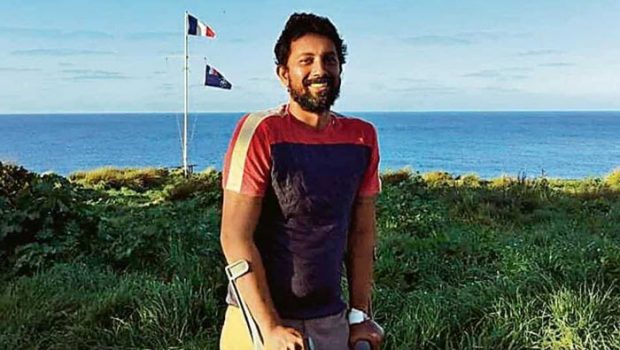


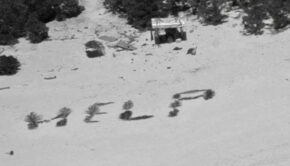
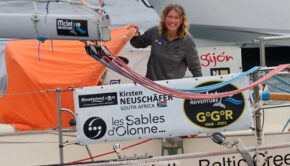
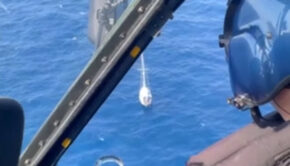
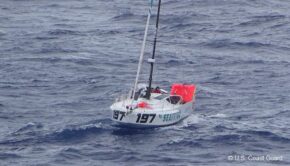
 We’ll keep your information safe.
We’ll keep your information safe.